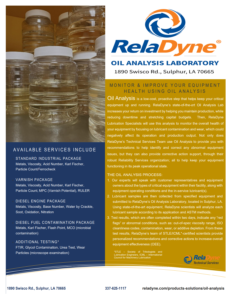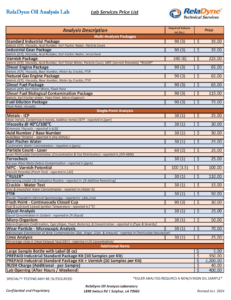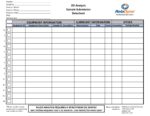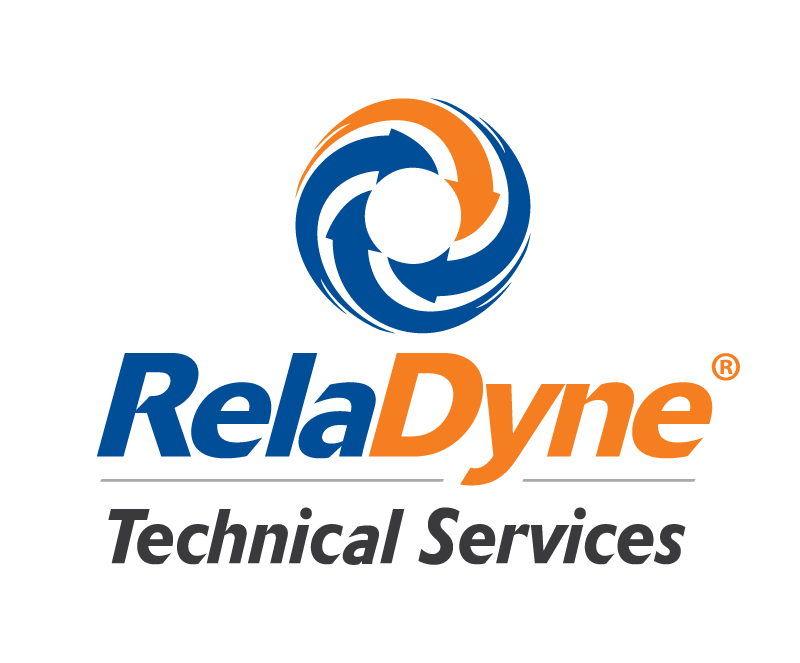Oil Analysis
Monitor & Improve Your Equipment Health using Oil Analysis
Oil analysis is a low-cost, proactive step that helps keep your critical equipment up and running. RelaDyne Lubrication Specialists can analyze and monitor the overall health of your equipment by focusing on lubricant contamination and wear that can negatively affect the operation of your equipment.
The Oil Analysis process:
- Our experts will speak with customer representatives and equipment owners about the types of critical equipment within their facility, along with equipment operating conditions and the in-service lubricant(s).
- Lubricant samples are collected from specified equipment and submitted to RelaDyne’s Oil Analysis Laboratory, located in Sulphur, LA.
- Using state-of-the-art equipment, RelaDyne scientists will analyze each lubricant sample according to its application.
- Test results, often completed within two days, indicate any “red flags” or abnormal conditions, such as: out-of-spec viscosity range, ISO cleanliness codes, contamination, wear, or additive depletion. From these test results, RelaDyne’s team of STLE/ICML*-certified scientists provide personalized recommendations and corrective actions to increase overall equipment effectiveness (OEE).
RelaDyne’s Oil Analysis Lab increases your return on investment by helping you maintain production, while reducing downtime and stretching capital budgets. Not only does RelaDyne’s Technical Services Team use Oil Analysis to provide you with recommendations that help identify and correct any abnormal equipment issues, but they can also provide corrective action support, through their robust Reliability Services organization, to keep your equipment functioning in its peak operating state.
*STLE – Society of Tribologists and Lubrication Engineers, ICML – International Council for Machinery Lubrication
Lab Capabilities & Equipment
Metals
Wear, contaminant, and additive metals determined by ICP, reported in ppm
Viscosity @ 40°C/100°C
Kinematic viscosity measured in cSt
Karl Fischer (Water)
Reported in ppm; can trace low levels of free, emulsified and dissolved water
Acid Number/Base Number
Reported in mg of KOH/mL of oil; increases with decreasing oil health
FTIR
Fourier Transform Infrared spectroscopy can be used to measure fuel dilution, soot, oxidation, and sulfates
Particle Count
Gives the number and size distribution of particles in a sample; reported using ISO Code System
Wear Particles (Microscope)
Visual examination used to determine size, shape, color, and other features of the particles
Ferrocheck
Detects ferrous debris in ppm; unlike ICP, detects particles larger than 5um
Flash Point (Closed Cup)
Measures the temperature necessary to heat sample to flash, reported in °F
RULER
Compares current antioxidant levels with the original levels of the new oil to determine remaining useful life of an oil
Crackle
Reported in % of water (free and/or emulsified) in the sample
MPC (Varnish)
Varnish potential reported in ΔE by collecting insoluble particles on a patch and measuring patch color
Glycol Contamination (Oil)
Determines presence of glycol in oil
Micro-Organism
Determines if micro-organisms (algae, yeast, bacteria) are present
Urea Test
Tests the percentage of urea in DEF sample
Want to learn more about how RelaDyne can help improve your Equipment Health?
Complete the below form and one of our experts will be in-touch





